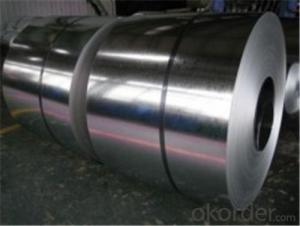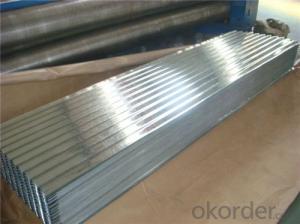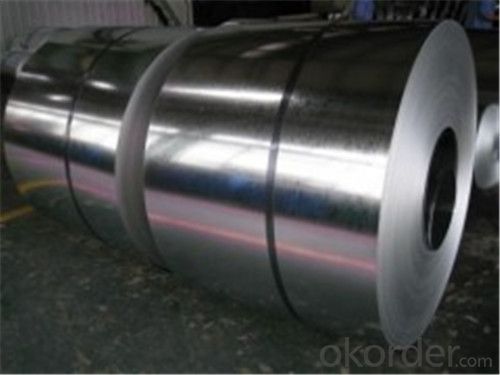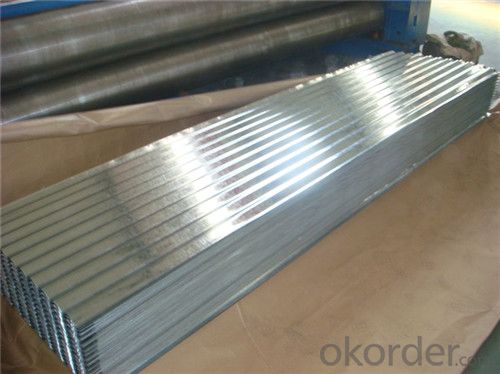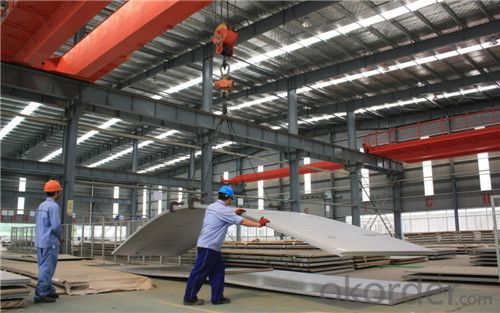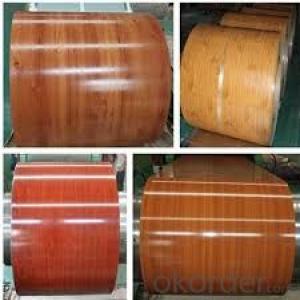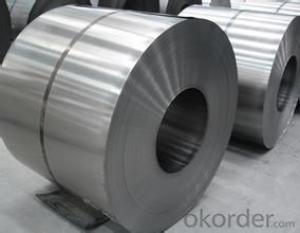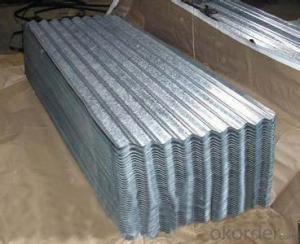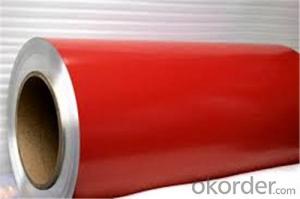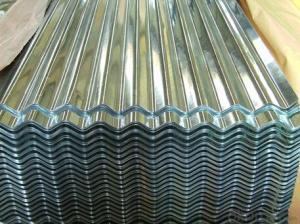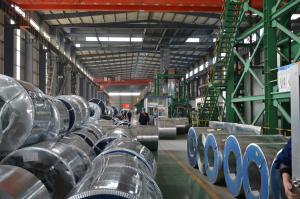hot rolled galvanized steel coils for roof
- Loading Port:
- Shanghai
- Payment Terms:
- TT OR LC
- Min Order Qty:
- 36 m.t.
- Supply Capability:
- 30000 m.t./month
OKorder Service Pledge
Quality Product, Order Online Tracking, Timely Delivery
OKorder Financial Service
Credit Rating, Credit Services, Credit Purchasing
You Might Also Like
| NAME | GALVANIZED | GALVALUME/ALUZINC | PPGI/PPGL | CURROGATED STEEL SHEETS | COILD ROLLED |
| CERTIFICATE | ISO9001:2008 | ||||
| STANDARD | ASTM A653, JIS G3302 SGCC/SGCH ,GB/T 2518, European standard | ASTM A792, JIS G3321 JIS G3317 | JIS G3312 GB/T 1275…… | JIS G3141 SPCC, GB…… | |
| GRADE | SS grade 33-80 ; SGCC, SGCH, SGCD1-SGCD3, SGC340-SGC570, SGCC, DX51D…. | Grade 33-grade 80. ;SGLCC SGLCD SGLCDD SGLC400-SGLC570;SZACC, SZACH, SZAC340R,…. | CGCC, CGCH , CGC340-CGC570, CGCD1-CGCD3; Grade | Grade 33-grade 80.;SGLCC SGLCD SGLCDD SGLC400-SGLC570;SZACC, SZACH, SZAC340R;.CGCC, CGCH ,CGC340-CGC570, CGCD1-CGCD3; SPCC…. | SPCC- SPCG ……. |
| MODEL NO. | (0.12-1.5)*1250MM or under | 0.16-1.5*1250MM or under | 0.16mm-1.5mm *1250mm or under | Corrugated width: 850MM, 820MM, , 900MM,760MM, 688MM,880MM, 750MM, 840MM, 373MM, 990MM, 918MM,875MM,…… | 0.4-2.0mm* 1250mm or under |
| TYPE | steel coil, steel sheets/ plates, corrugated steel sheets/plates | steel coil, steel sheets/ plates, corrugated steel sheets/plates | steel coil, steel sheets/ plates, corrugated steel sheets/plates | galvanized corrugated steel sheets/plates; galvalume/aluzinc corrugated steel sheets/plates PPGI/PPGL corrugated steel sheets/plates ; cold rolled corrugated steel sheets/plates. | steel coil, steel sheets/ plates, |
| TECHNIQUE | hot rolled-cold rolled-galvanized | hot rolled-cold rolled-galvalume /Aluzinc | hot rolled- cold rolled-galvalume/galvanized – PPGL/PPGI | galvanized/ galvalume /aluzinc/PPGI/PPGL/cold rolled steel coil—sheets/plates—corrugated sheets/plates. | hot rolled- cold rolled |
| SURFACE TREATMENT | Mini/regular/ big/zero spangle, ,Chromate treatment/ chromate-free treatment/ untreated Unoile/ oiled ,TENSION LEVELLERT SKIN PASS anti-fingerprint/Un-anti-fingerprint, coating… | Mini/regular /big/zero spangle, ,Chromate treatment/ chromate-free treatment/ untreated Unoile/ oiled ,TENSION LEVELLERT SKIN PASS anti-fingerprint/Unanti-fingerprint, coating ,color… | oiled / Un- oiled, bright oiled…… | ||
| APPLICATION | structural use, roofing, commercial use ,household appliance,industry,family… | ||||
| SPECIAL APPLICATION | wear resistant steel, high-strength-steel plate | ||||
- Q: How are steel coils used in the production of steel wire?
- Steel coils are used in the production of steel wire by being uncoiled and then fed through a series of machines that stretch and draw the steel into the desired wire thickness.
- Q: What are the dimensions of steel coils used in the storage tank industry?
- The dimensions of steel coils used in the storage tank industry can vary depending on the specific requirements of the tank being manufactured. However, in general, steel coils used for storage tanks are typically available in various sizes and thicknesses. The width of steel coils can range from around 600 millimeters to 2,400 millimeters, while the length can vary from several meters to tens of meters. The thickness of the coils can also vary, typically ranging from 1.5 millimeters to 10 millimeters or more. These dimensions are determined by factors such as the size and capacity of the storage tank, the material being stored, and the structural requirements of the tank. The specific dimensions for a given storage tank project would be determined by the tank manufacturer or designer, in accordance with industry standards and specific project specifications.
- Q: What are the advantages of using galvanized steel coils?
- There are numerous advantages to using galvanized steel coils in various applications. Firstly, galvanized steel coils are highly resistant to corrosion. The process of galvanization involves coating the steel with a layer of zinc, which acts as a protective barrier against moisture, chemicals, and other elements that can cause rust and corrosion. This makes galvanized steel coils ideal for outdoor applications where they will be exposed to harsh weather conditions or corrosive substances. Secondly, galvanized steel coils have excellent durability and longevity. The zinc coating provides an extra layer of protection to the steel, making it more resistant to wear and tear. This means that galvanized steel coils have a longer lifespan compared to other types of steel, reducing the need for frequent replacements and saving costs in the long run. Additionally, galvanized steel coils have high strength and structural integrity. The zinc coating not only provides corrosion resistance but also enhances the overall strength of the steel. This makes galvanized steel coils suitable for applications that require a strong and reliable material, such as construction, automotive, and industrial manufacturing. Furthermore, galvanized steel coils are easy to work with and require minimal maintenance. The zinc coating provides a smooth and uniform surface, making it easier to paint, weld, and fabricate. Unlike other coatings or finishes, galvanized steel coils do not require regular maintenance or additional protective measures, reducing the time and effort needed to keep them in good condition. Lastly, galvanized steel coils are environmentally friendly. The zinc coating used in galvanization is a recyclable material, making it a sustainable choice for various industries. Additionally, the long lifespan of galvanized steel coils reduces the need for frequent replacements, reducing waste and the overall environmental impact. In conclusion, the advantages of using galvanized steel coils include corrosion resistance, durability, high strength, easy workability, low maintenance, and environmental sustainability. These benefits make galvanized steel coils a popular choice in a wide range of applications, from construction and manufacturing to automotive and infrastructure projects.
- Q: 2 refridgerator of similar model and same brand..one is stainless steel...the other is clear steel (cheaper)..so wat's the difference between the two?
- In okorder /... The appliances that are not made of stainless steel are made of a mild steel which is then finished with a durable enameled finish, in colors even. Stainless steel appliances look very nice in the showroom, but it is no fun trying to keep them fingerprint and handprint free. If you have ever owned a toaster that was made from stainless steel then you know how much fun it would be to have to keep a whole refrigerator fingerprint free, The oils transferred from the skin leave very distinct smears on stainless surfaces.
- Q: What are the typical coil width options?
- The typical coil width options vary depending on the specific application and industry. However, common coil width options range from 1 inch to 72 inches or even wider.
- Q: How are steel coils labeled for identification?
- Steel coils are typically labeled for identification using stickers or tags that contain information such as the coil number, dimensions, weight, grade, and other relevant details.
- Q: Can steel coils be coated with weather-resistant materials?
- Yes, steel coils can be coated with weather-resistant materials. Coating steel coils with weather-resistant materials helps to protect them from corrosion and other weather-related damages, extending their lifespan and ensuring their durability in various weather conditions.
- Q: How are steel coils processed for specific applications?
- Steel coils are processed for specific applications through a series of carefully planned steps. The process begins with the selection of the appropriate grade and thickness of steel, which is determined based on the requirements of the end application. Once the steel coils are received, they undergo a series of processing steps to transform them into the desired product. The first step in processing steel coils is known as uncoiling, where the coil is unwound and straightened. This ensures that the coil is flat and ready for further processing. The uncoiled steel is then cleaned to remove any dirt, oil, or rust that may be present on the surface. This is typically done through a process called pickling, which involves immersing the steel in a bath of acid to remove any impurities. After cleaning, the steel undergoes various shaping processes depending on the desired application. This can include processes such as slitting, where the coil is cut into narrower strips, or shearing, where it is cut into specific lengths. These shaping processes are often performed using specialized machinery that can handle the high strength and thickness of steel. Once the steel has been shaped, it may undergo additional processes to enhance its properties. For example, it may be heat treated to increase its strength or hardness, or it may undergo a coating process to improve its corrosion resistance. Coating processes can include techniques such as galvanizing, where the steel is coated with a layer of zinc, or painting, where it is coated with a layer of paint. Finally, the processed steel coils are inspected for quality and undergo any necessary finishing processes. This can include processes such as trimming the edges to remove any irregularities, or applying protective coatings to prevent damage during transportation or storage. Overall, the processing of steel coils for specific applications is a complex and carefully controlled process. It involves a combination of shaping, cleaning, coating, and finishing processes to ensure that the steel meets the required specifications and is ready for use in various industries such as automotive, construction, and manufacturing.
- Q: Can steel coils be stacked on top of each other?
- Yes, steel coils can be stacked on top of each other.
- Q: What are the common uses of cold rolled steel coils?
- Cold rolled steel coils are commonly used in a variety of industries and applications. They are frequently utilized in the automotive industry for manufacturing parts such as automobile bodies, frames, and components. Cold rolled steel coils are also widely employed in construction for producing structural components, roofing, and siding. Additionally, they are used in the manufacturing of appliances, furniture, and various electrical products. The smooth and consistent surface of cold rolled steel coils makes them ideal for applications that require a high-quality finish, such as in the production of kitchen utensils and decorative items.
Send your message to us
hot rolled galvanized steel coils for roof
- Loading Port:
- Shanghai
- Payment Terms:
- TT OR LC
- Min Order Qty:
- 36 m.t.
- Supply Capability:
- 30000 m.t./month
OKorder Service Pledge
Quality Product, Order Online Tracking, Timely Delivery
OKorder Financial Service
Credit Rating, Credit Services, Credit Purchasing
Similar products
Hot products
Hot Searches
Related keywords
